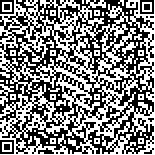李艳芳,牛青英,王俊莉.个体化有氧运动对高龄冠心病患者心功能、心率恢复及生活质量的影响[J].中华物理医学与康复杂志,2016,38(1):39-42
扫码阅读全文

|
| 个体化有氧运动对高龄冠心病患者心功能、心率恢复及生活质量的影响 |
|
| |
| DOI: |
| 中文关键词: 个体化有氧运动 高龄冠心病 心功能 心率 生活质量 |
| 英文关键词: Aerobic exercise Elderly Heart disease Cardiac function Heart rate Quality of life |
| 基金项目: |
|
| 摘要点击次数: 3651 |
| 全文下载次数: 5528 |
| 中文摘要: |
| 目的探讨个体化有氧运动对高龄冠心病患者心功能、心率恢复及生活质量的影响。 方法共选取高龄冠心病患者100例,采用随机数字表法将其分为观察组及对照组,每组50例。对照组患者仅给予常规治疗(包括抗血小板凝集、扩张血管、控制血压等),同时遵医嘱适量运动;观察组患者则在常规治疗基础上辅以个体化有氧运动干预。于治疗前、治疗3个月后观察2组患者心功能、心率恢复情况,同时采用SF-36生活质量量表评定2组患者治疗前、后生活质量改善情况。 结果治疗后观察组患者左室射血分数(LVEF)、6min步行试验(6MWT)结果及最大摄氧量(VO2max)分别为(36.38±6.15)%、(435.77±50.76)m、(19.43±2.86)L/min,均显著优于治疗前[分别为(31.38±3.29)%、(405.85±41.76)m、(16.75±2.72)L/min]及对照组水平[分别为(32.56±5.75)%、(411.46±41.39)m、(16.75±2.76)L/min](P<0.05);治疗后观察组患者运动峰值心率、1min心率恢复值(HRR1)分别为(105.49±11.26)次/分钟、(18.62±6.05)次/分钟,均显著优于治疗前[分别为(100.58±11.25)次/分钟、(15.45±5.33)次/分钟]及对照组水平[分别为(101.42±11.31)次/分钟、(16.02.46±5.74)次/分钟](P<0.05);治疗后观察组患者SF-36量表总分为(495.25±39.44)分,均显著优于治疗前[(330.72±25.76)分]及对照组水平[(432.79±35.27)分](P<0.05)。 结论个体化有氧运动干预能显著改善高龄冠心病患者心功能,促进其心率恢复,对提高患者生活质量具有重要意义。 |
| 英文摘要: |
| Objective To explore the effect of aerobic exercise on cardiac function, heart rate recovery and the quality of life of elderly heart disease patients. MethodsOne hundred senile heart disease patients were studied. They were randomly divided into a control group and an observation group, with 50 in each group. Both groups were provided with the conventional anti-platelet aggregation treatment, dilation of blood vessels and control of blood pressure. The observation group was also given individualized aerobic exercise training. At the outset and after 3 months the cardiac function and heart rate recovery of both groups were observed, and their quality of life was evaluated using the SF-36 life quality scale. ResultsAfter the treatment, the average left ventricular ejection fraction of those in the observation group was significantly better than before the treatment, and significantly better than the average among the controls. The average 6-minute walking test time and average maximum oxygen uptake in the observation group were also significantly better than before the treatment and significantly better than among the controls. The average peak heart rate and HRR1 in the observation group had increased significantly, and significantly more than those of the control group. The average total SF-36 score in the observation group was also significantly higher. ConclusionIndividualized aerobic exercise can significantly improve cardiac function and promote heart rate recovery in elderly patients with heart disease, which is of clinical value for improving their quality of life. |
|
查看全文
查看/发表评论 下载PDF阅读器 |
| 关闭 |